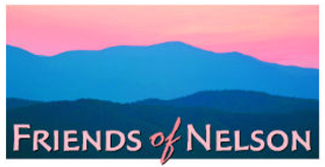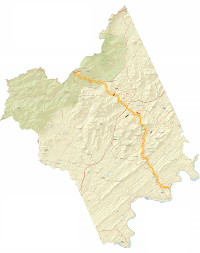by Mary Eiserman | May 14, 2024 | Events, Friends of Nelson, Mountain Valley Pipeline
 Join Friends of Nelson at the Blue Mountain Barrel House on Saturday June 15th to celebrate the anniversary of the cancellation of the Atlantic Coast Pipeline and support the ongoing fight against the Mountain Valley Pipeline. Author and journalist Jon Mingle will share a reading from his new book ‘Gaslight, the Atlantic Coast Pipeline and the Fight for America’s Energy Future. Food and Beverage from Blue Mountain will be available on site.
Join Friends of Nelson at the Blue Mountain Barrel House on Saturday June 15th to celebrate the anniversary of the cancellation of the Atlantic Coast Pipeline and support the ongoing fight against the Mountain Valley Pipeline. Author and journalist Jon Mingle will share a reading from his new book ‘Gaslight, the Atlantic Coast Pipeline and the Fight for America’s Energy Future. Food and Beverage from Blue Mountain will be available on site.
Speakers from the Legal Defense Fund for the ongoing battle against the Mountain Valley Pipeline and Music will follow.
The event is free and open to the public.
All proceeds from book and t-shirt sales will benefit the MVP Legal Defense Fund.
by Mary Eiserman | May 14, 2024 | Outdoor Explorations
“Sirtalis” is the Latin word for a garter. It is more-or-less pronounced “SEER-tah-liss.” Back in
1843, an Austrian zoologist came up with this wacko name for a snake that is common
throughout North America. The full scientific name is Thamnophis (pronounced THAM-no-fiss)
sirtalis. Basically, it means a bush snake that wears a garter – or looks like a garter. Take your
pick.
The scientific name stuck. So there you have the reason why the official state snake of Virginia
is known by a word for a lady’s undergarment.
Several Garter Snake subspecies are found in the U.S. The subspecies that lives along the
Florida Gulf coast has lovely blue stripes, while the subspecies in mid-western states has red
stripes. Even albinos can be found in the wild, but here in Virginia, their dark stripes vary from
brown to grey to black with lighter cream-colored stripes as a contrast.

Garters in the eastern U.S. average between 18 – 27 inches long, and they are one of the most
commonly seen snakes in Virginia. They eat slugs, earthworms, leeches, lizards, small frogs,
frog eggs, small fish, and even small rodents. It is interesting that one species of earthworm,
the Red Wiggler, is toxic to Garter Snakes. This species of earthworm is native to Europe, and in
the U.S., it is mostly found in commercial composting bins. In turn, Garter Snakes are eaten by
animals such as hawks, crows, herons, raccoons, and other snake species. Juvenile Garters are
sometimes eaten by shrews, bullfrogs, and even large crayfish.
In Virginia, it is not legal to keep more than one native wild snake in captivity without a license,
but it is possible to purchase captive-bred Garters. Although Garters rarely bite people, keep in
mind that some individuals will readily emit a nasty-smelling musk when handled. If you get
the musk on your hands, a lot of washing with soap will be required to get rid of the smell, so
just enjoy watching them as they go about your garden hunting leeches that will eat your
Hostas!
by Susan McSwain for FoN
by Mary Eiserman | Apr 28, 2024 | Natural Resources
Crunching worms, squeaking voles, drumming ants: how scientists are learning to eavesdrop on the sounds of soil (thegaurdian.com)
Until recently, soil had been a relative blank spot for monitoring species abundance. Farmers and gardeners hoping to find out how healthy their soils were had to dig up spadefuls and carry out laborious tests.
Last year, a study found soil was the single most species-rich habitat on Earth, with more than half of all species living in it. But only a fraction have been identified, and most are too small to see. Soundscapes are becoming an increasingly popular way of monitoring wildlife abundance, above ground, beneath the earth and underwater.
by Mary Eiserman | Apr 15, 2024 | Outdoor Explorations
Getting the blues is not something many people think about in April when the
whole world is bursting with new life. However, spring is when some of nature’s
loveliest blues arrive.
Spring Azures are butterflies that appear in the earliest days of spring, from
Canada to Florida. Their Latin scientific name is Celastrina ladon, which can be
loosely translated as Heavenly Spirit. And indeed, watching these baby-blue waifs
flit gracefully along the ground – visiting both flowers and mud puddles – it is easy
to see how they were given such a lofty name.
Males can be distinguished from females by their lighter blue color. Females
come in a slightly darker blue, but the blue is only visible when they are flying.
Luckily for us, they fly so low to the ground that we normally see them while
looking down from above as they fly by. When they perch, they fold their wings
over their back and all you see is the whitish underside of the wing with a few
black spots.
Both sexes have big, black shiny eyes and long antennae with zebra black-and-
white stripes. Of course, these features can only be seen if you look at them
through a good pair of binoculars. After all, their wingspan is only an inch wide.
In keeping with their small size, they have a very short proboscis (tongue), so they
can’t reach nectar from very many species of flowers.
The Spring Azure has one of the shortest lifecycles of any butterfly. Adults only
live for two to five days, but since there are several generations, you can see
them from March through May. Once summer arrives, they are replaced by a
related species, the Summer Azure, which has a slightly longer lifespan.
Enjoy getting the blues in springtime!
by Susan McSwain for FoN
by Mary Eiserman | Apr 12, 2024 | Recycling
Panelists: AI has a bigger role to play in recycling (resource-recycling.com)
Goals include using AI to try to solve some of the main challenges of the recycling business, particularly when it comes to sorting materials.
Extended producer responsibility legislation and other laws can help, but it may be possible for AI capabilities to create automated sorting processes for increasingly niche types of materials. There are other ideas for streamlining the recycling process, such as assisting in maximizing the efficiency of chemical recycling.
 Join Friends of Nelson at the Blue Mountain Barrel House on Saturday June 15th to celebrate the anniversary of the cancellation of the Atlantic Coast Pipeline and support the ongoing fight against the Mountain Valley Pipeline. Author and journalist Jon Mingle will share a reading from his new book ‘Gaslight, the Atlantic Coast Pipeline and the Fight for America’s Energy Future. Food and Beverage from Blue Mountain will be available on site.
Join Friends of Nelson at the Blue Mountain Barrel House on Saturday June 15th to celebrate the anniversary of the cancellation of the Atlantic Coast Pipeline and support the ongoing fight against the Mountain Valley Pipeline. Author and journalist Jon Mingle will share a reading from his new book ‘Gaslight, the Atlantic Coast Pipeline and the Fight for America’s Energy Future. Food and Beverage from Blue Mountain will be available on site.






